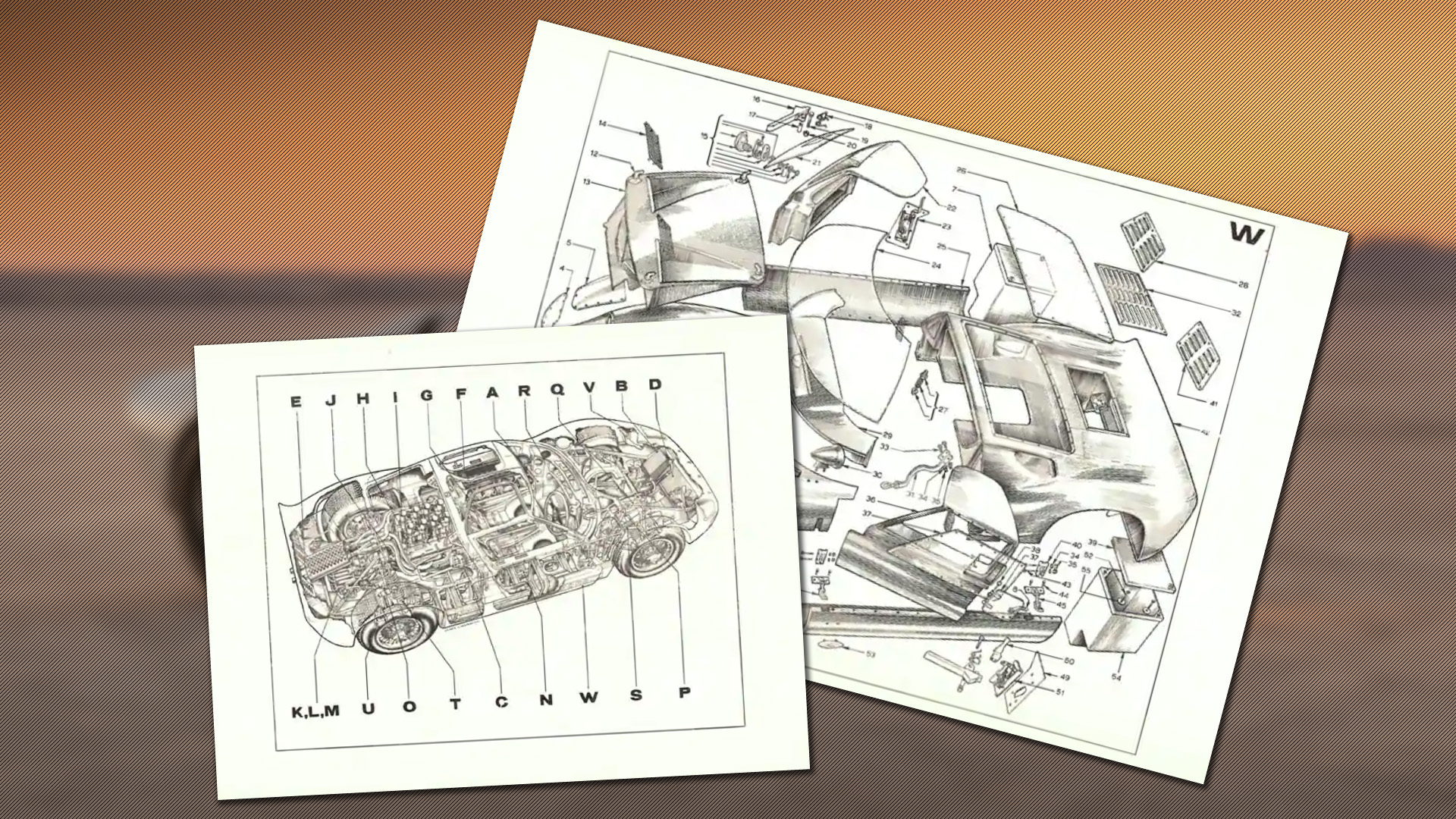

The Ford GT40 needs little introduction as one of the most famous Le Mans racers of all time. Despite being designed and manufactured on the opposite side of the pond as its brand, the high-performance sports car became synonymous with the first victory American-nameplate victory at the 24 Hours of Le Mans in 1966. And while films like Ford v. Ferrari romanticize this very event, it leaves a hole that automotive enthusiasts would beg to fill: a look inside the actual development of Ford’s legendary GT40.
More than 50 years after Ford’s tremendously important victory, Ford obtained certain documents that were thought to be lost forever. Ford released part of its GT40 “treasure trove,” which includes never-before-seen schematics, design drawings and artifacts that give an inside look into the development of the GT40. It’s only second best to a time machine.


These drawings and notes were long forgotten about by Ford. It wasn’t until the Blue Oval held a media event in 2019 commemorating the development of the GT40 program that a former engineer stepped forward with some rather interesting material related to the buildout of the original race-winning monster.
At the GT40 event, Ford showcased Mose Noland, one of the engineers who made the 1966 Le Mans win possible. Shortly after the event, another Ford engineer reached out to Noland to let him know that he had some very interesting nostalgia in his possession. That engineer was Don Eichstaedt.
Don worked at Kar Kraft, a performance shop in Brighton, Mich., which operated during Ford’s “Total Performance” era in the ’60s. Kar Kraft was the Ford Advanced Vehicle division’s U.S.-based answer to Lola Cars, which was the U.K-based firm that played a significant role in the development of the GT40. It just so happened that Kar Kraft had one major client: Ford themselves.
I know this is starting to feel like a skunkworks project, but Ford maintains that Kar Kraft was an entirely separate company, even though Kar Kraft let the team “behind the curtain” on major product development. In fact, Kar Kraft had even supplied the gearbox used in the race-winning Mark II GT40, so when Ford decided to bring GT40 development back to the States for the Mark IV, it made sense to put Kar Kraft in charge of it. Beginning in 1967, it also meant having Don oversee the development.


Last month, Don went to the Ford Motor Company Archives with a stack of papers that he deemed historically significant to the development of the GT40. That means diagrams, personal accounts of the car’s performance, and even a parts list produced by J.W. Automotive Engineering—that’s John Wyer’s firm that overtook production of the GT40 at the factory in Slough, England, to ensure that homologation requirements were met.
Don wanted to make sure that the documents he had were in the hands of someone who could ensure that they were properly preserved. Thankfully, the Ford Archives specializes at this very task. Despite having more than a million photographs and 16,000 cubic feet of paper material, Ford noted that Don’s contributions helped to fill some “critical gaps” in the Archives’ collection.

Most importantly, these documents show just how much work went into perfecting the GT40 ahead of Ford’s historic ’66 Le Mans win. Reading through the testing and development accounts shows the tiny changes that helped ensure that the Blue Oval took the win and that the GT40’s development wasn’t for nothing.
No matter how many times you’ve watched Ford v. Ferrari, we guarantee this little bit of insider knowledge will feel just a little bit more special.











Got a tip? Send us a note: tips@thedrive.com